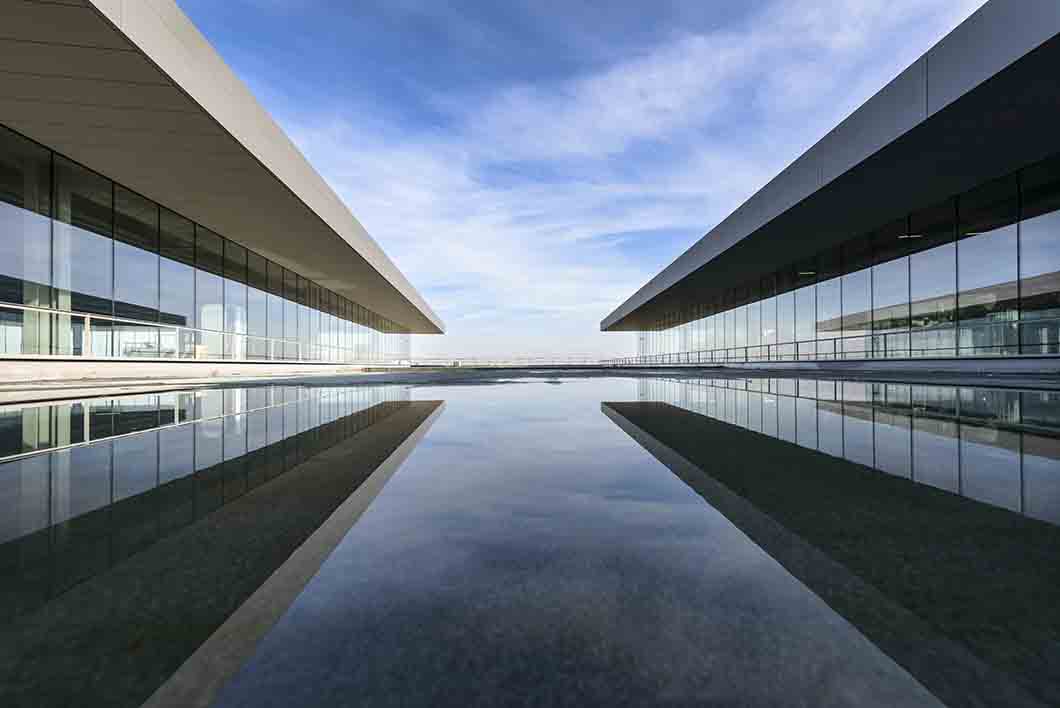

A New Look at How Concrete has Shaped Our World


Earlier this month the Portland Cement Association (PCA) announced a new educational campaign called Shaped by Concrete, with the goal of increasing our awareness of the sustainability, resiliency and durability of concrete, the world’s most widely used building product.
The campaign will explore how the world around us has been shaped by cement and concrete, and how our communities and cities are becoming more resilient in the face of increasing stresses from our changing climate.
There has never been a more important time to explain how and why concrete became – and continues to be – the material of choice for virtually every type of construction through its positive impacts on society, notes the PCA.
“As we prepare for the challenges future generations face, concrete will be even more critical to building a sustainable world for tomorrow,” said Mike Ireland, president and CEO of the Portland Cement Association.
“Concrete is the most durable, resilient, available and affordable material in the built environment, supporting sustainable economic, social and environmental development priorities, and the Shaped by Concrete campaign is how we’ll tell that story to stakeholders and partners,” he added.
Shaped by Concrete will focus on key themes often overlooked and underrepresented in conversations and media coverage of cement and concrete, including their ability to meet sustainable development goals, decrease costs from natural disasters, and assist with key societal challenges, such as our nation’s housing crisis.
A more sustainable material
Not only is concrete the most-consumed resource on earth, but it is also one of the most versatile. Concrete can be molded into nearly any shape or use. It is also one of the most sustainable building materials, providing energy efficiency, lower life-cycle costs and resilience following natural and man-made disasters.
The Shaped by Concrete initiative will also make known the incredible efforts that are being made by cement manufacturers to aggressively lower the impacts of concrete use and cement manufacturing on climate change.
Cement producers have achieved a 35% reduction in the amount of energy used to produce a metric ton of cement over the last 47 years. Alternative fuels, such as industrial byproducts that otherwise would end up in landfills, now represent more than 15% of total cement plant energy consumption in the U.S.
Further, exposed concrete (such as roads, buildings, runways, sidewalks, etc.) continually absorbs carbon from the atmosphere and captures it forever, known as carbonation, offsetting emissions from its initial creation. This is a process that has been little understood in the past, but which could greatly alter the importance of the built environment as a carbon sink as noted in research conducted by the Pacific Northwest Building Resiliency Coalition.
“The industry has made major progress toward making concrete more sustainable, and it continues to push the boundaries of energy efficiency and emissions reductions through new research, technology and innovations,” said Jeremy Gregory, executive director, Concrete Sustainability Hub at the Massachusetts Institute of Technology.
“Concrete will play a critical role in further decarbonization of the built environment, and I’m excited to see the stories of those advancements from ‘Shaped by Concrete’,” he noted.
Creating a resilient and prosperous nation
One of the more important benefits of concrete is the role it plays in making communities stronger and safer. Of all construction materials for buildings and other infrastructure, concrete is by far the most disaster-resilient.
As noted by the PCA, this is especially important in the face of increasing numbers of catastrophic weather events, where safe shelter during and after disasters can mean the difference between life and death.
That increased durability also provides economic benefits, especially in disaster-prone areas: every $1 spent on resilient building and construction can save $6 in recovery costs according to a recent study by the National Institute of Building Sciences. Considering that in 2017, the 16 largest weather events each caused over $1 billion in damage, savings from resilient concrete construction can quickly scale up.
“From national security concerns to durability and safety in the face of natural and man-made disasters to enabling economic growth, cement and concrete make our communities more resilient,” said Tom Beck, PCA Chairman and President of Continental Cement. “‘Shaped by Concrete’ will help our industry show these important benefits and ensure cement and concrete continue to keep our nation safe, secure and prosperous.”
A solid foundation
Cement and concrete have been foundations in advancing society from the earliest of civilizations dating back to iconic structures that are nearly 2,000 years old, such as the Pantheon and Colosseum in Rome.
Today, our country’s most significant investments in infrastructure, transportation, culture and development were built with cement and concrete. Infrastructure projects like the Hoover Dam and the Los Angeles aqueduct helped shape the Western United States.
World-class museums, such as the Guggenheim in New York are as stunning on the outside as the masterworks are on the inside. And our country’s transportation system, from the Metro system in our nation’s capital to the many airports that connect our world, show how cement and concrete are part of our lives every day.
“We are excited to share bold, compelling stories of how we can make the world a better place, shaped by concrete,” said Ireland.
For more information on cement and concrete, and to explore the new Shaped by Concrete campaign, visit www.shapedbyconcrete.com.
Recent Posts
Mobilizing Resilient Design and Construction
Implementing a multifaceted strategy can motivate state and local governments to prioritize resilient design and…
Insurance Pricing: Navigating a New Era of Risk
The growing frequency and severity of climate-related disasters present a significant challenge for the insurance…
Designing for Resilience … It’s A Must
We see far too often structures built to current code that lack planning and design…
What are the Real Benefits of Designing for Resilience
While designing for resilience requires initial investments, the long-term payoffs often far outweigh these costs.…
Reducing Disaster Risks and Protecting Insurability in the Pacific Northwest
Proactive measures to enhance resilience and preparedness are critical to mitigating insurability risks. This will…
How to Achieve More Resilient Building Codes
More comprehensive disaster prevention perspectives are needed to enable communities better to withstand the increased…


